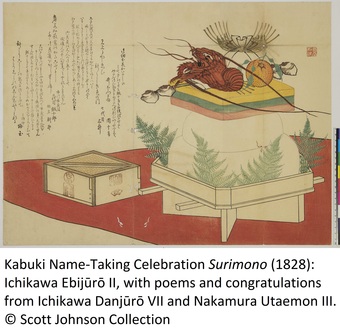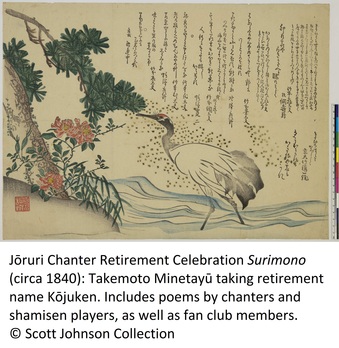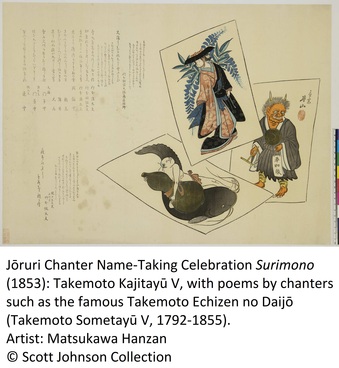-
ARC-iJAC Project Spotlights: Interview with Andrew Gerstle (Emeritus Professor, SOAS University of London, UK) on Cultural Salons and the Visual Arts in Kyoto and Osaka, 1750-1900: Digitizing Kamigata Surimono and PaintingsApril 14, 2021(Wed)
Professor Gerstle, thank you for your time today.

As the leader of the FY2020 ARC-iJAC project "Cultural Salons and the Visual Arts in Kyoto and Osaka, 1750-1900: Digitizing Kamigata Surimono and Paintings", could you please tell us the reason why you started this project?
Prof. Gerstle: I have been fascinated over the years by discovering how common it was in the Edo period for men and women of all ages and statuses to be active in cultural pursuits (遊芸) for pleasure.
I first realized this in researching gidayū amateur performance, where I found that until World War II gidayū as a hobby was popular all over Japan. I then saw how kabuki actors circulated among patrons and fans via haikai gatherings. Pursuit of the arts also importantly was a way for women as well to socialize outside their neighbourhood, and for individuals of different status (身分) to interact.
I still find it intriguing that individuals often had several pen names for their different activities. Under a pen name, everyone was nominally equal as a devotee of the particular art they were participating in. In contemporary Japan, we still see that it is common to socialize through cultural or other organized activities, like the clubs at university.
How do you feel about the overall execution of this project? Have you come across any particular challenges?
Prof. Gerstle: The key element of this project is to create an online research corpus of paintings, surimono, and illustrated books, and then to siphon out all the information held in them in order to try to begin to understand the dynamics of how circles and networks functioned and how they supported the arts.
The ARC staff under Prof. Akama have done a magnificent job in photographing carefully about 2000 surimono and in the process of photographing more than 1500 paintings. Further, we have been able to input basic data on the items.
I did not think that we would get this far because the coronavirus pandemic has restricted travel. I have not been able to come to Japan as planned.
How have the ARC-iJAC resources supported you in realizing this project?
Prof. Gerstle: The skill, experience, and resources of the ARC-IJAC have made this project possible. No other institution could have done this work as efficiently.
Could you please give us an overview of the most significant research outcomes of this project so far?
Prof. Gerstle: There are two important outcomes of this grant. First, it enabled us to digitize the Scott Johnson extensive kamigata surimono collection - with over 2000 items, the largest known collection - and to make it available to researchers. The digitalization then enabled the British Museum to propose the acquisition of this collection to its Board for approval.
This is the first stage of a larger project. The completion of the digitalization of the large research corpus has made it possible for us to apply for a grant in the UK to continue this work, particularly in analyzing the data thus far collected.
The second important outcome is the start of the digitalization of the Hakutakuan private kamigata painting collection of more than 1500 items. Until now, only about 100 items have been published. This is an extremely important, large collection with a wide range of artists, including women artists. The inclusion of this collection in the ARC database will greatly enhance 19th-century kamigata art studies.
This is the first stage of a larger project. The completion of the digitalization of the large research corpus has made it possible for us to apply for a grant in the UK to continue this work, particularly in analyzing the data thus far collected.
What are your plans for the future to continue and expand this research project?
Prof. Gerstle: We hope this coming year to complete the digitizing of the private painting collection. At the same time, we are now preparing to submit a research proposal for a three-year grant to the UK Funding Council.
Prof. Gerstle, thank you very much for your time. We are very much looking forward to the further development of your project.
(This interview was conducted by Yinzi Emily Li.)

















